Thua Thien - Hue At night, people in a coastal commune in Quang Dien district, Hue city, bring flashlights to catch crabs to make food or sell to drinking establishments.
On a day in August, as soon as it got dark, Ho Van Bach, 34 years old, from Hai Duong commune, Hue city, and a group of friends went to the beach to catch crabs. To get to the beach, he had to climb over a sand dune that was over 70 meters high and over a kilometer long.
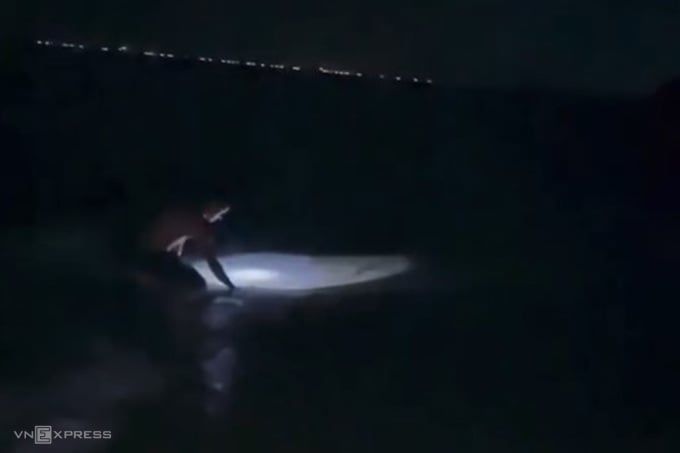
Mr. Bach shines a flashlight to catch crabs along the beach at night. Photo: Vo Thanh
Flashlights on their heads and plastic buckets in hand, Mr. Bach and his group of friends walked along the beach, shining lights to catch crabs on the sand. Seeing the flashlights, the crabs scattered to the water's edge to hide in the sand. Aiming for the biggest crab to chase, Mr. Bach used his hand to press the crab down on the sand so it wouldn't be caught, then caught it and put it in the plastic bucket. Just like that, after just over an hour, the group walked along the beach for more than 4 km, and the result was half a plastic bucket of crabs.
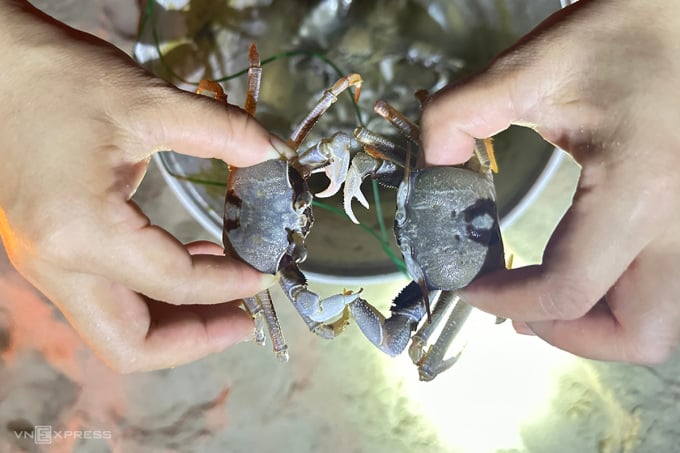
Crab shaped like three-sided crab in the South. Photo: Vo Thanh
Mr. Bach said that people in his hometown often set traps and wait for crabs to fall into the net. However, he and his group of friends still like to use flashlights and chase crabs on the sand.
"When they see the flashlight, the crabs quickly hide in the sand near the edge of the sea. Some crabs run into holes on the sandbank, so crab catchers have to be quick and clearly identify which crabs they want to catch," said Mr. Bach, adding that he often catches crabs to roast with salt or peel off the shell to get the meat to cook soup.
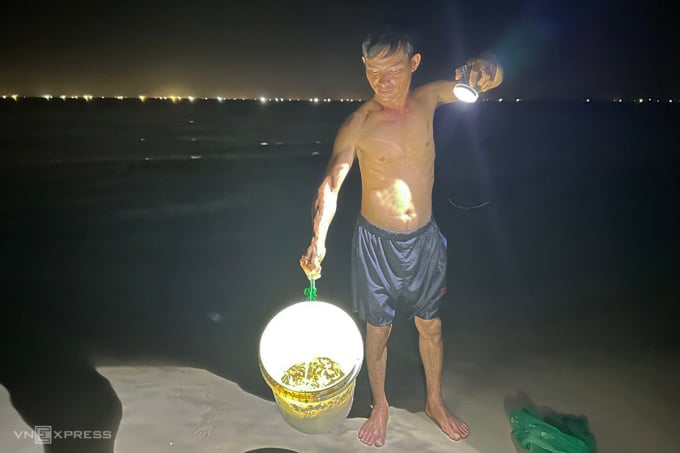
Mr. Bach shows off the finished product of half a bucket of crabs he just caught. Photo: Vo Thanh
Meanwhile, Mr. Ho Van Phi, 35 years old in Quang Cong commune, Quang Dien district, made a very simple trap to catch crabs. He dug a hole, buried a plastic bucket in the sand, and swept some shrimp around the mouth of the bucket. Smelling the shrimp's aroma, some crabs came to look for food and fell into the plastic bucket.
"Once the crabs fall into the plastic bucket, they won't be able to crawl out. In addition to rubbing shrimp paste around the plastic bucket, I also often use smelly dead fish and place tree branches across the plastic bucket to lure them into the trap. Many nights, the crabs get trapped in more than half of the plastic bucket after a few hours," said Mr. Phi.
The crabs are bought by drinking establishments for 30,000 VND/kg, and if there are many, they can earn 200,000 VND per night. But Mr. Phi usually keeps them for himself to eat and rarely sells them.
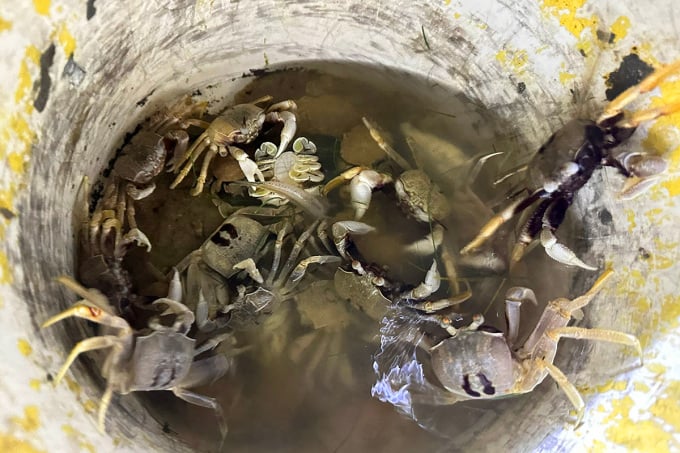
The handcuffs fell into the plastic bucket trap and could not get out. Photo: Vo Thanh
Crab, also known as wild crab, is a type of sea crab that often lives near the coast on sandy beaches. Preparing crabs as food is very easy and can be made into many dishes such as stir-fried with salt, boiled with salt and chili, or crushed to get the juice to cook soup.
Vo Thanh
Source link


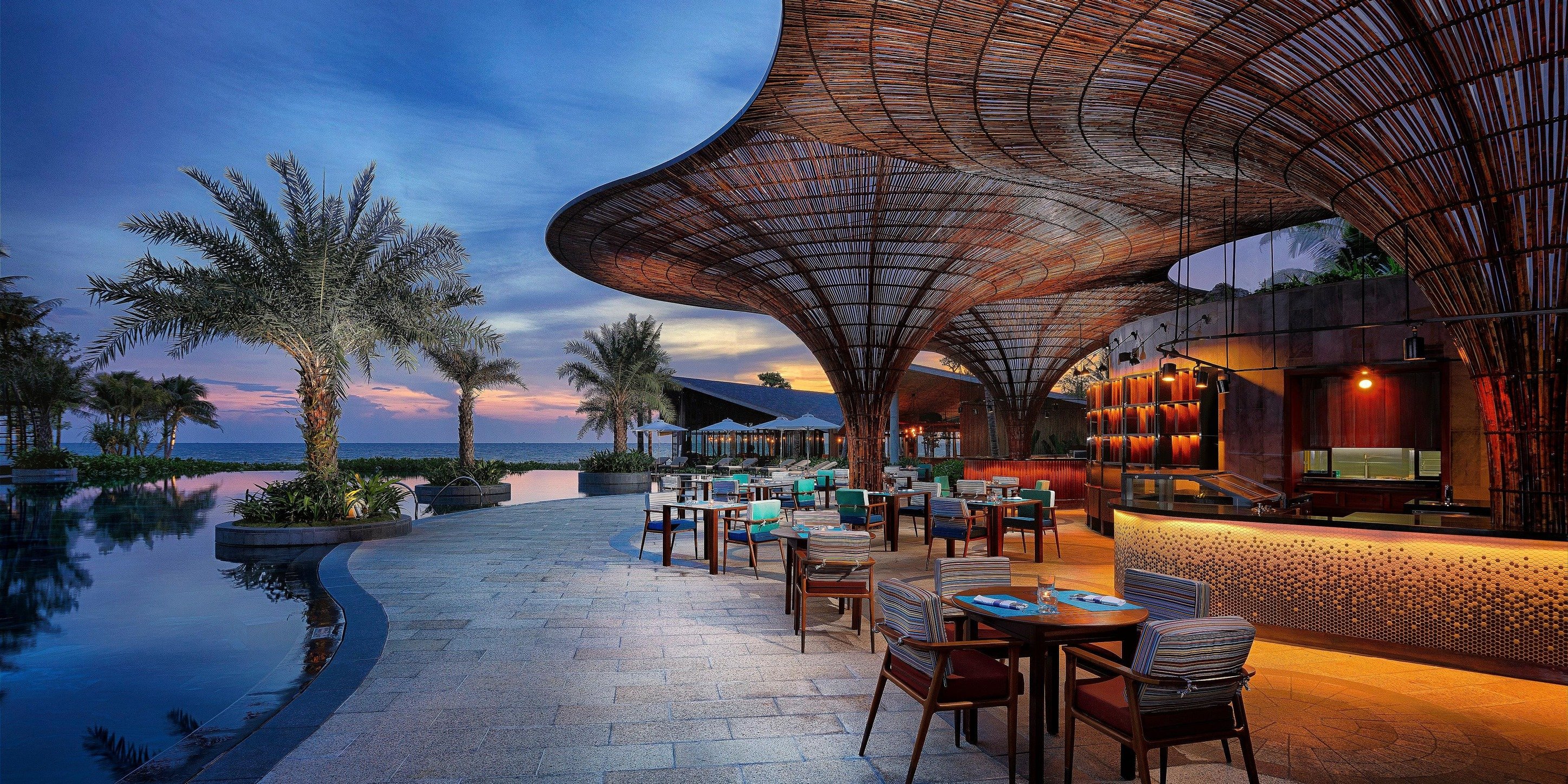
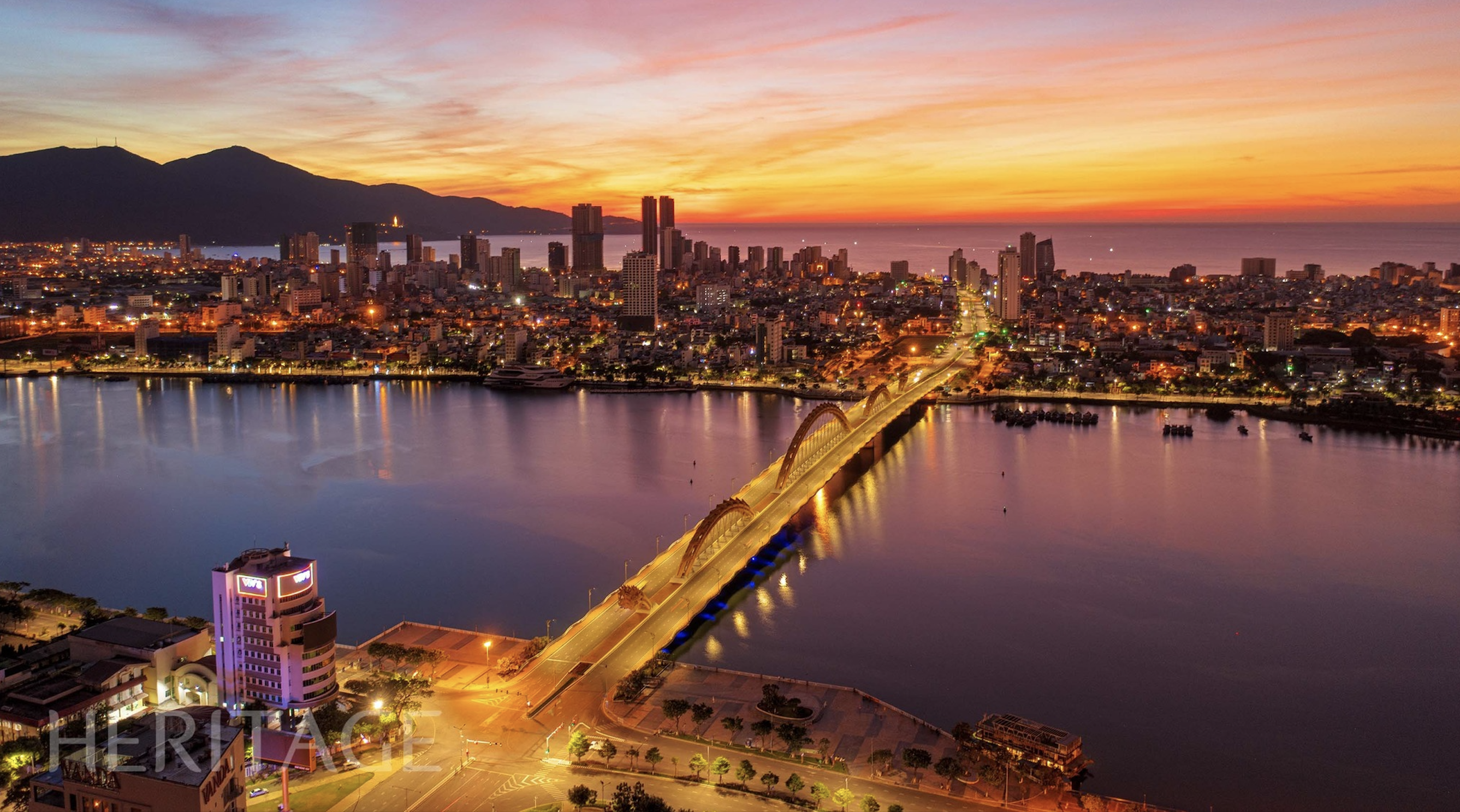
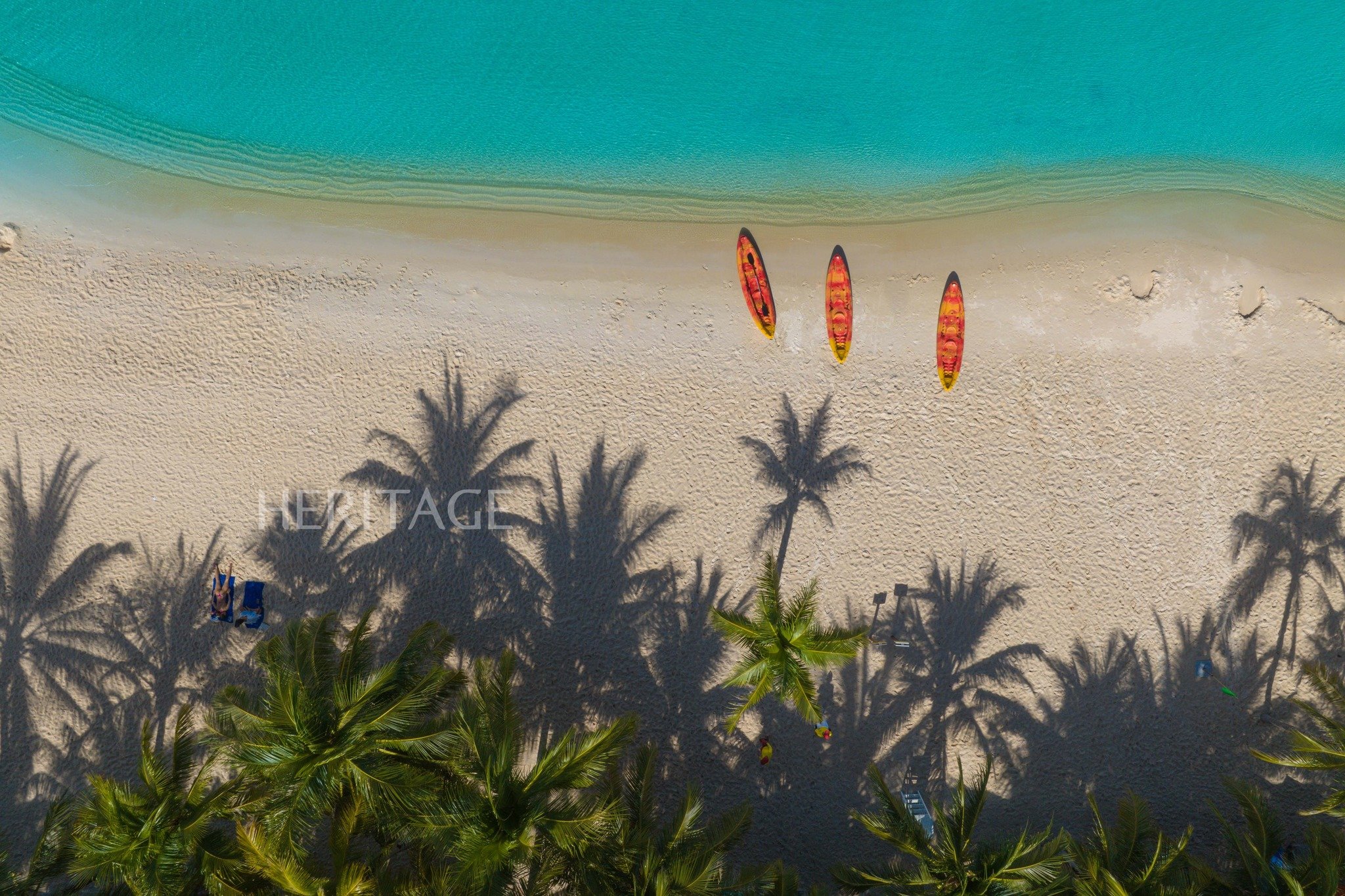
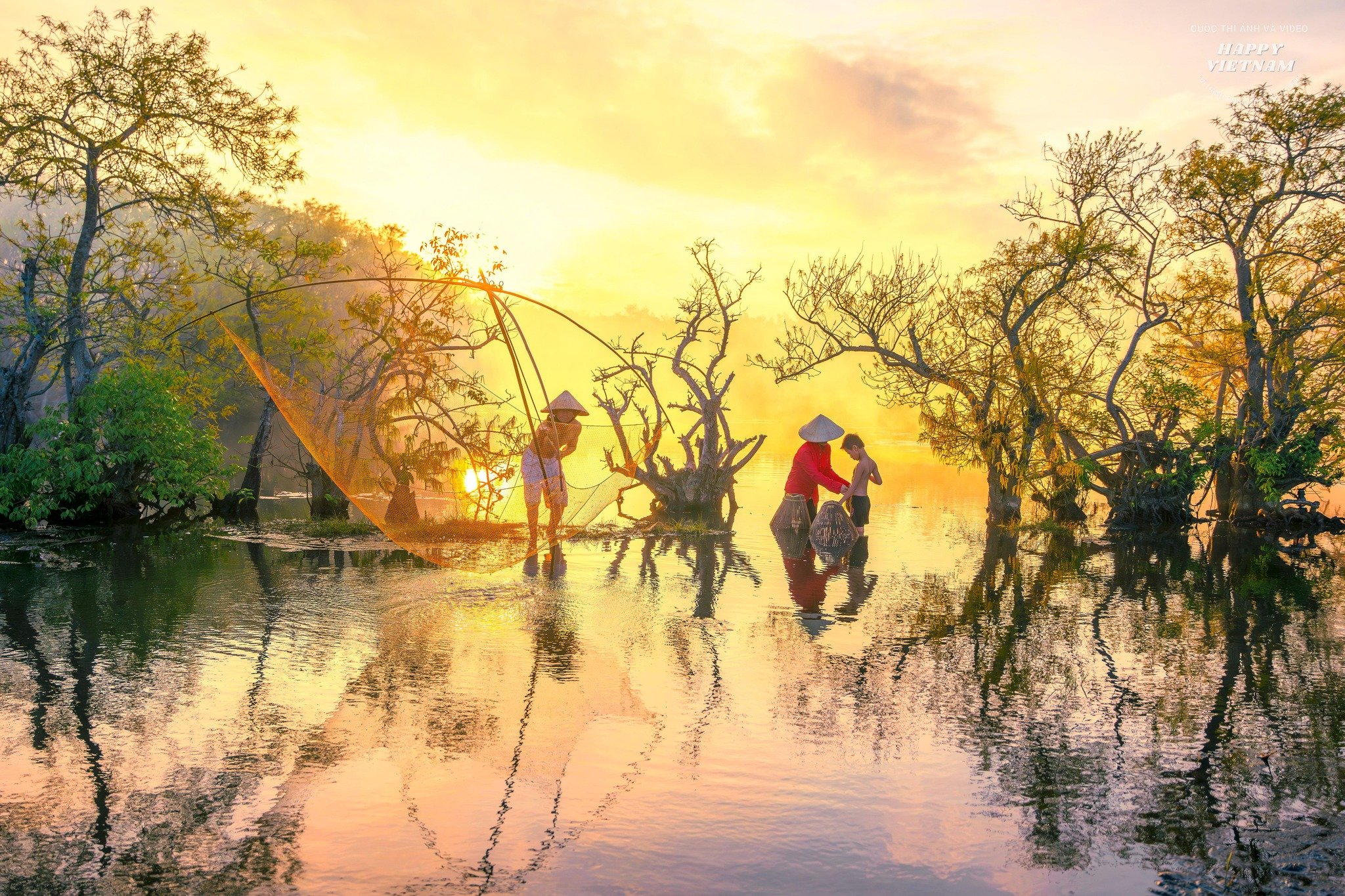

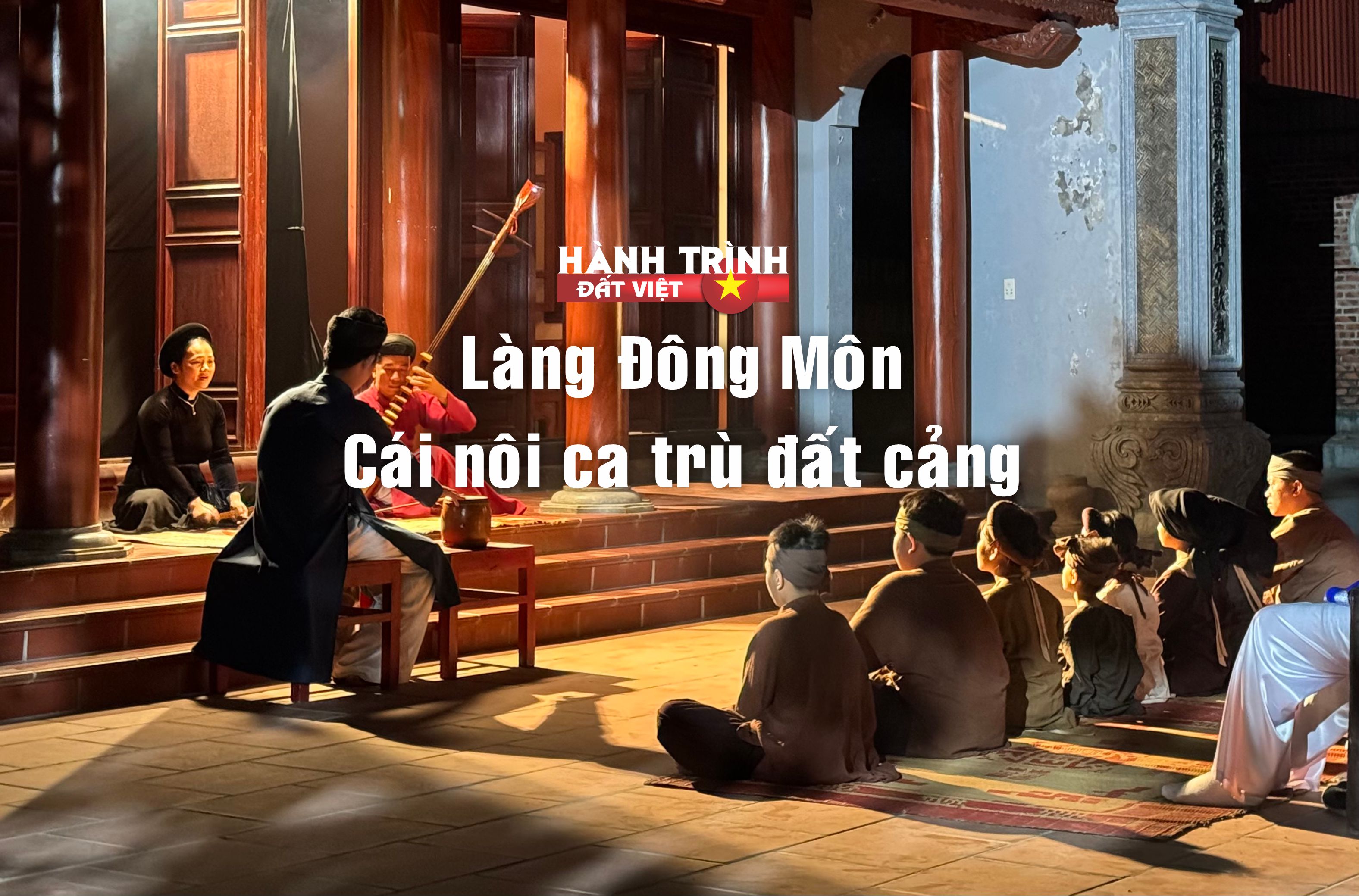


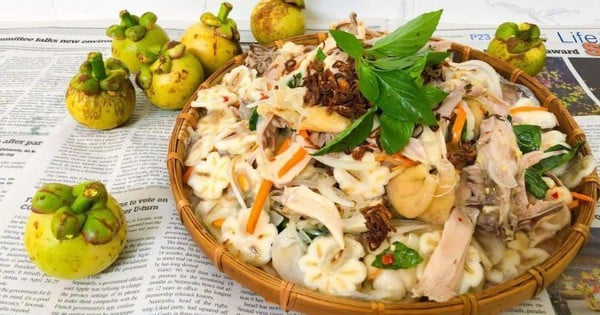

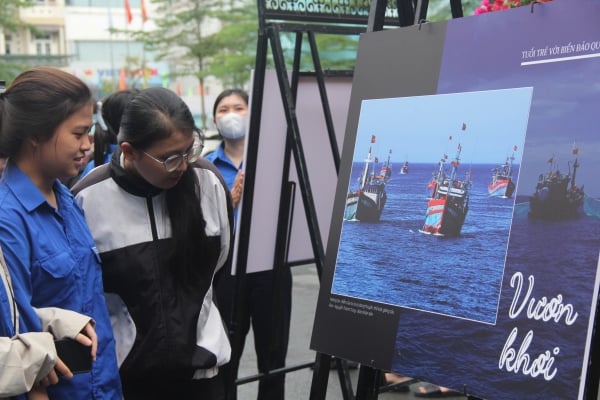

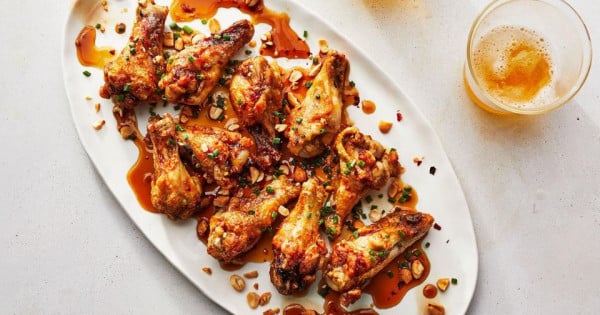

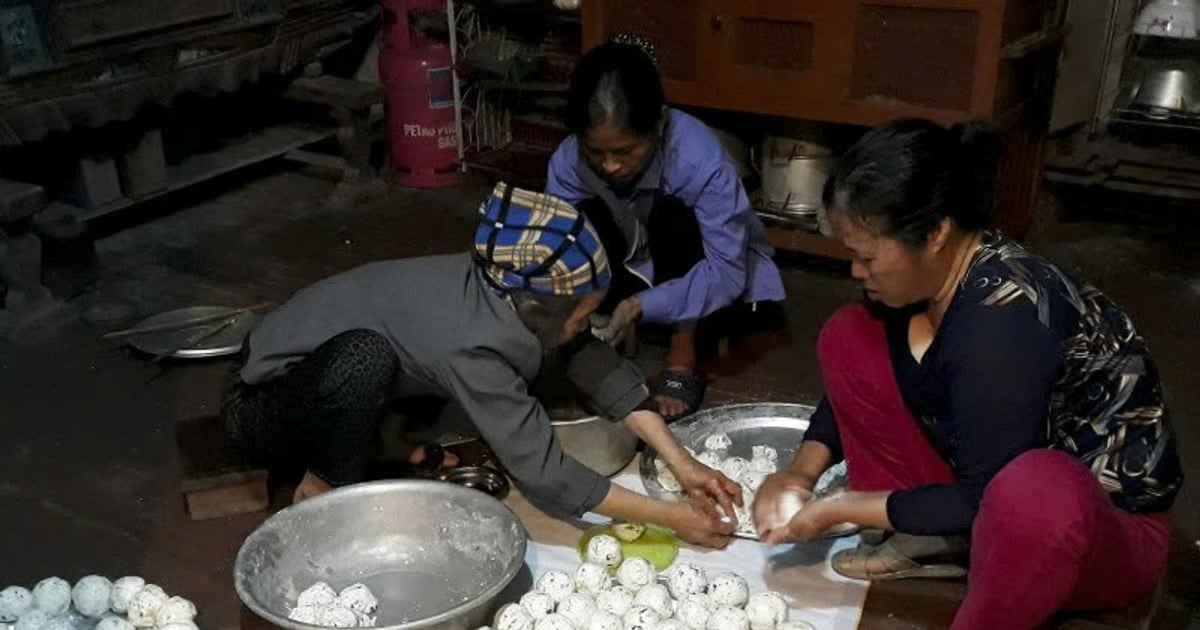



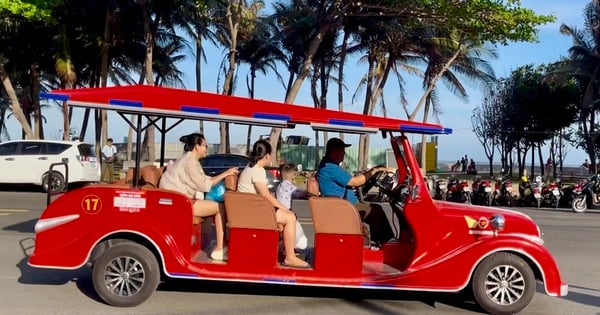

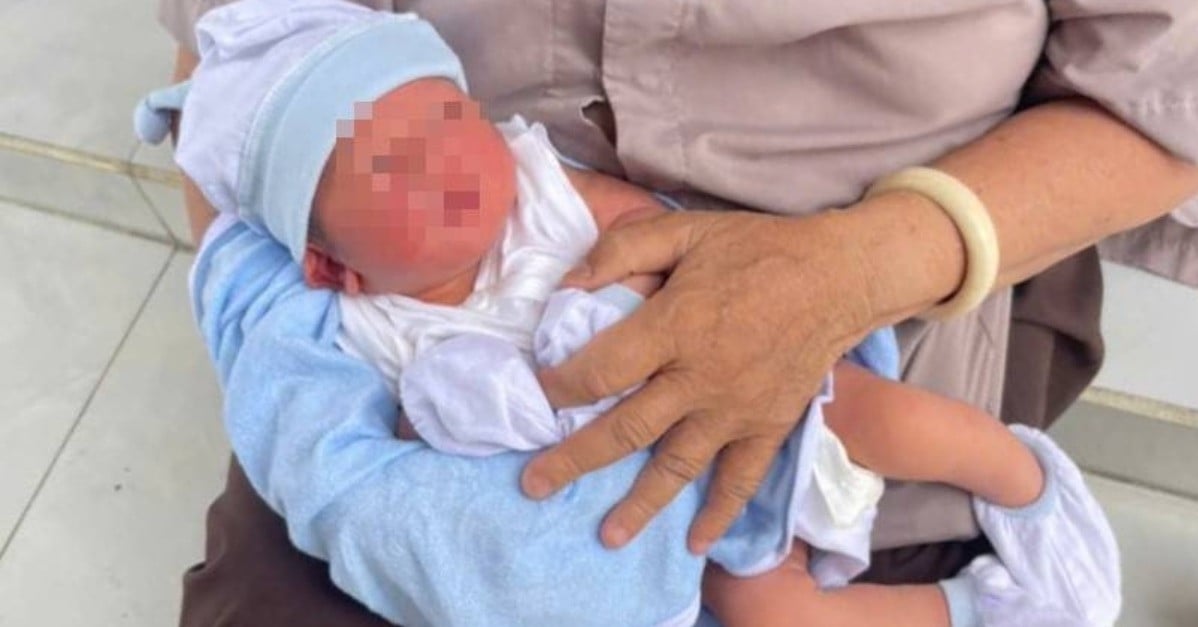

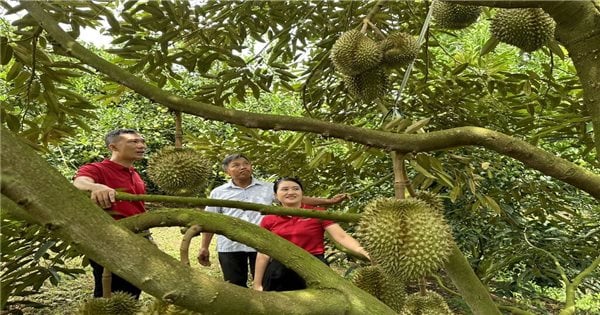


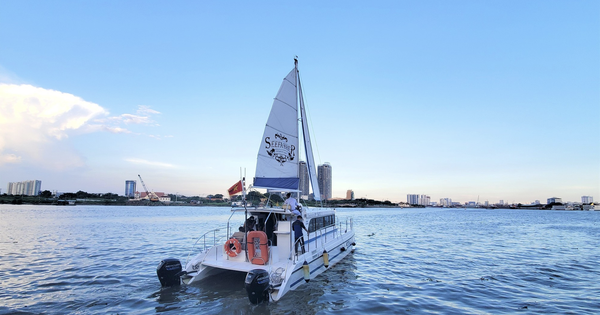


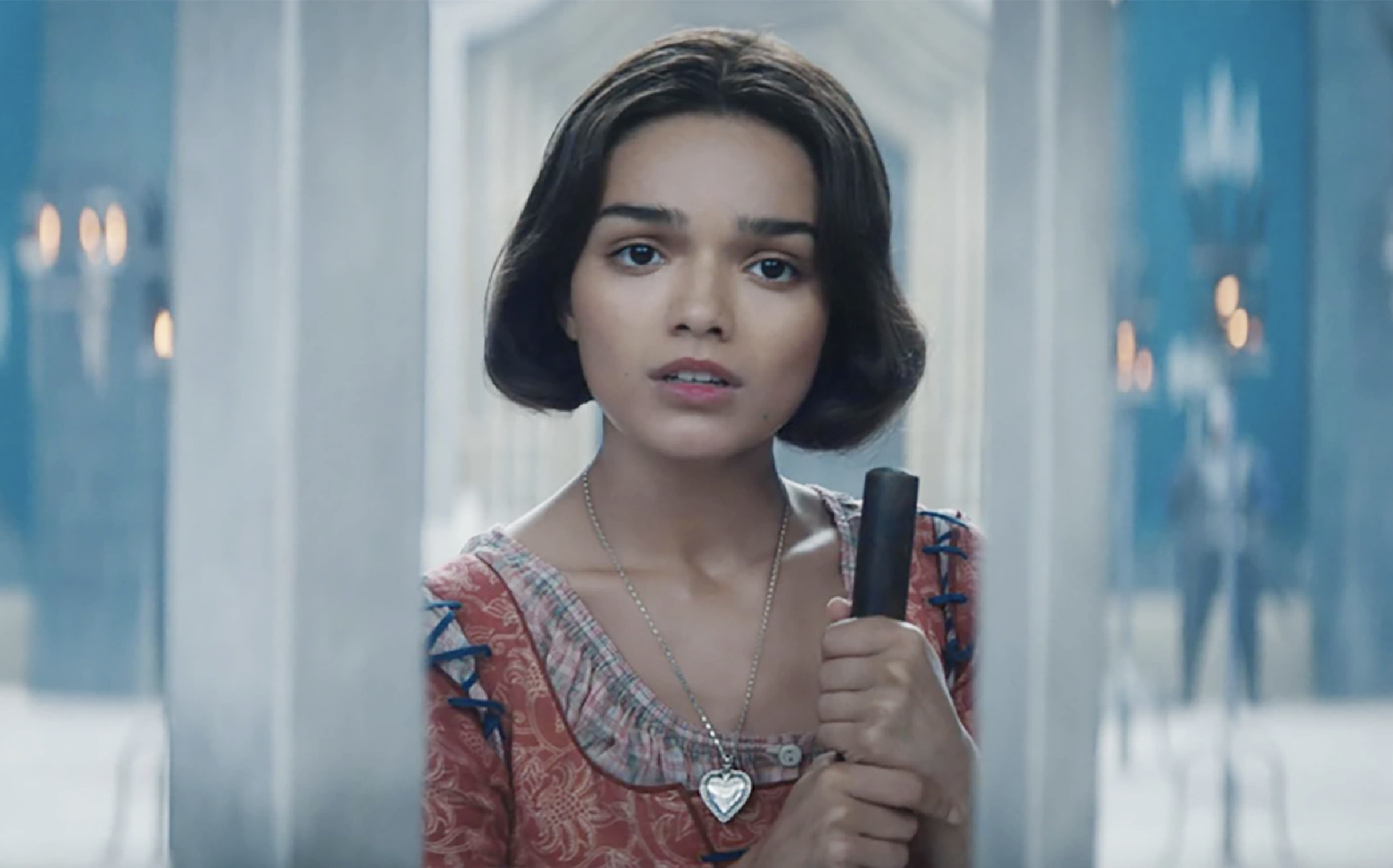







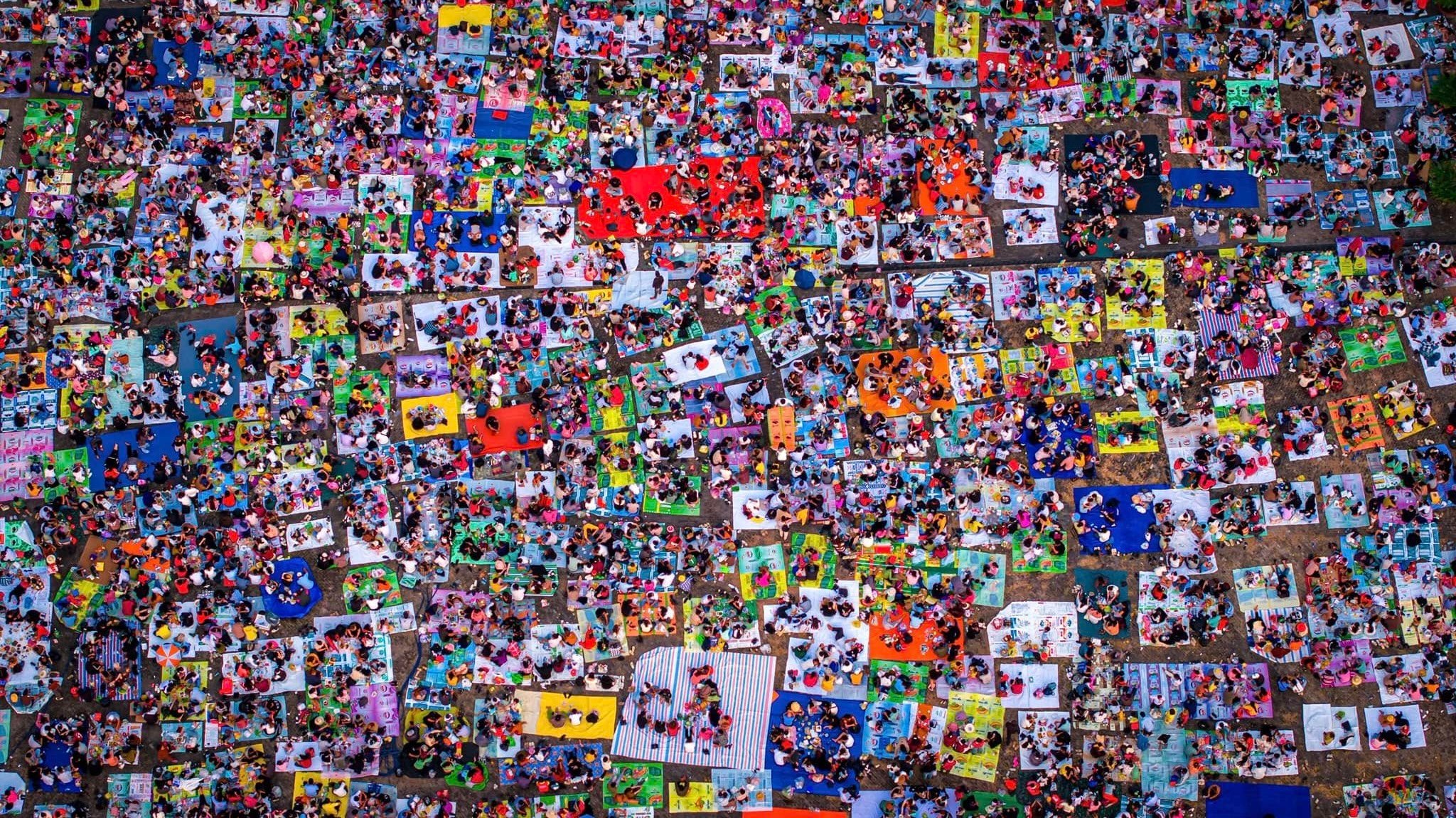
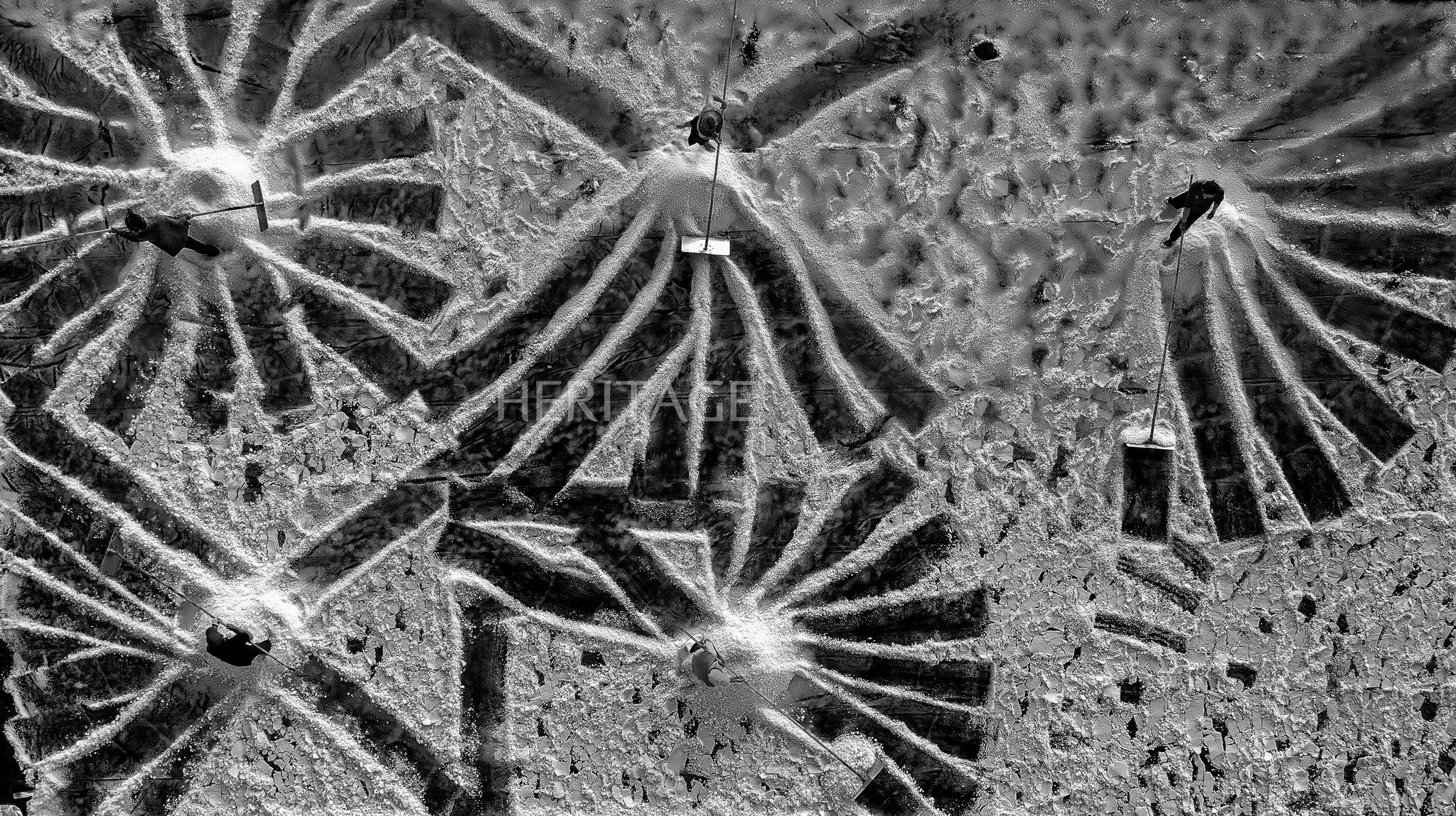
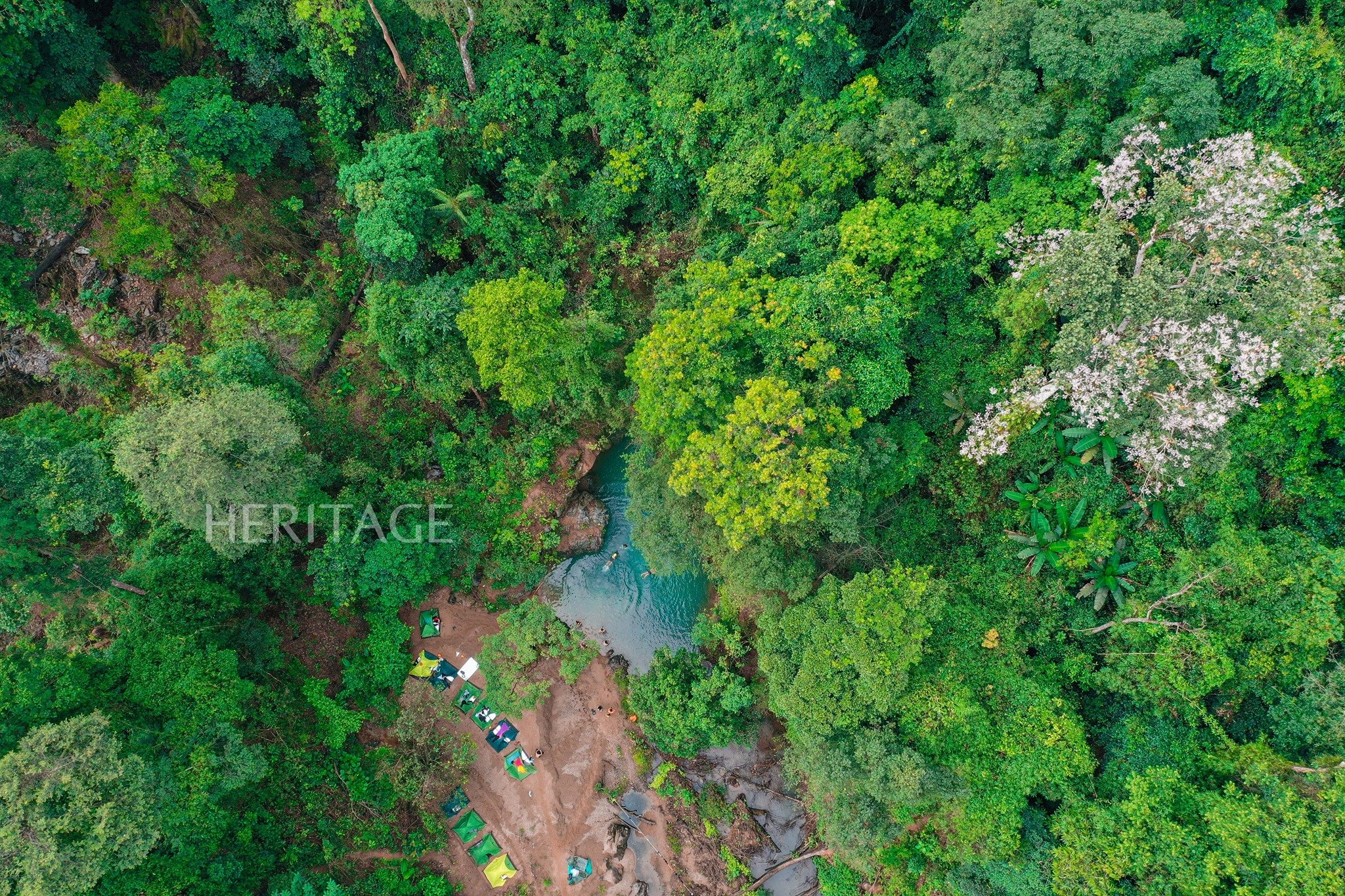
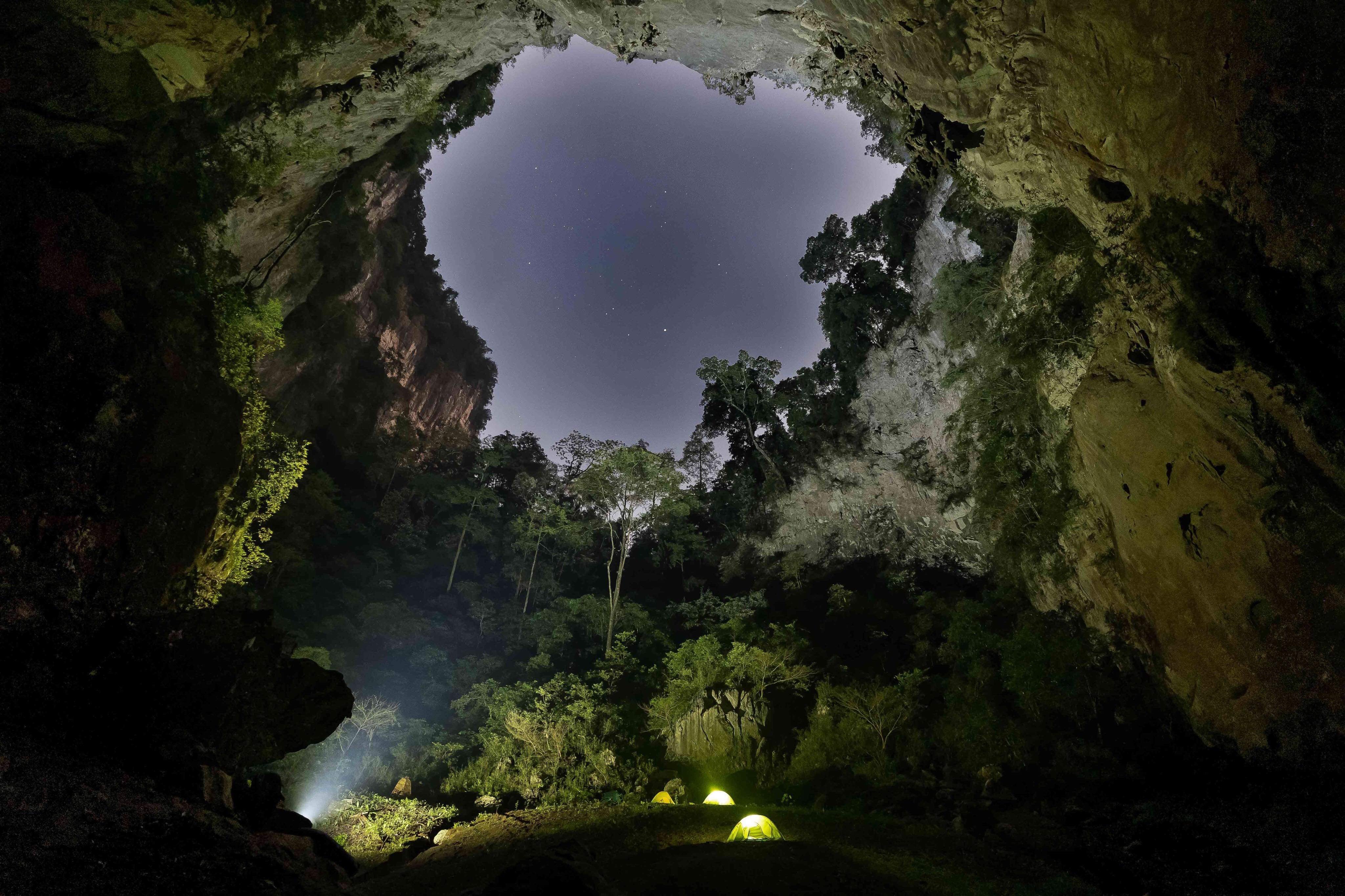
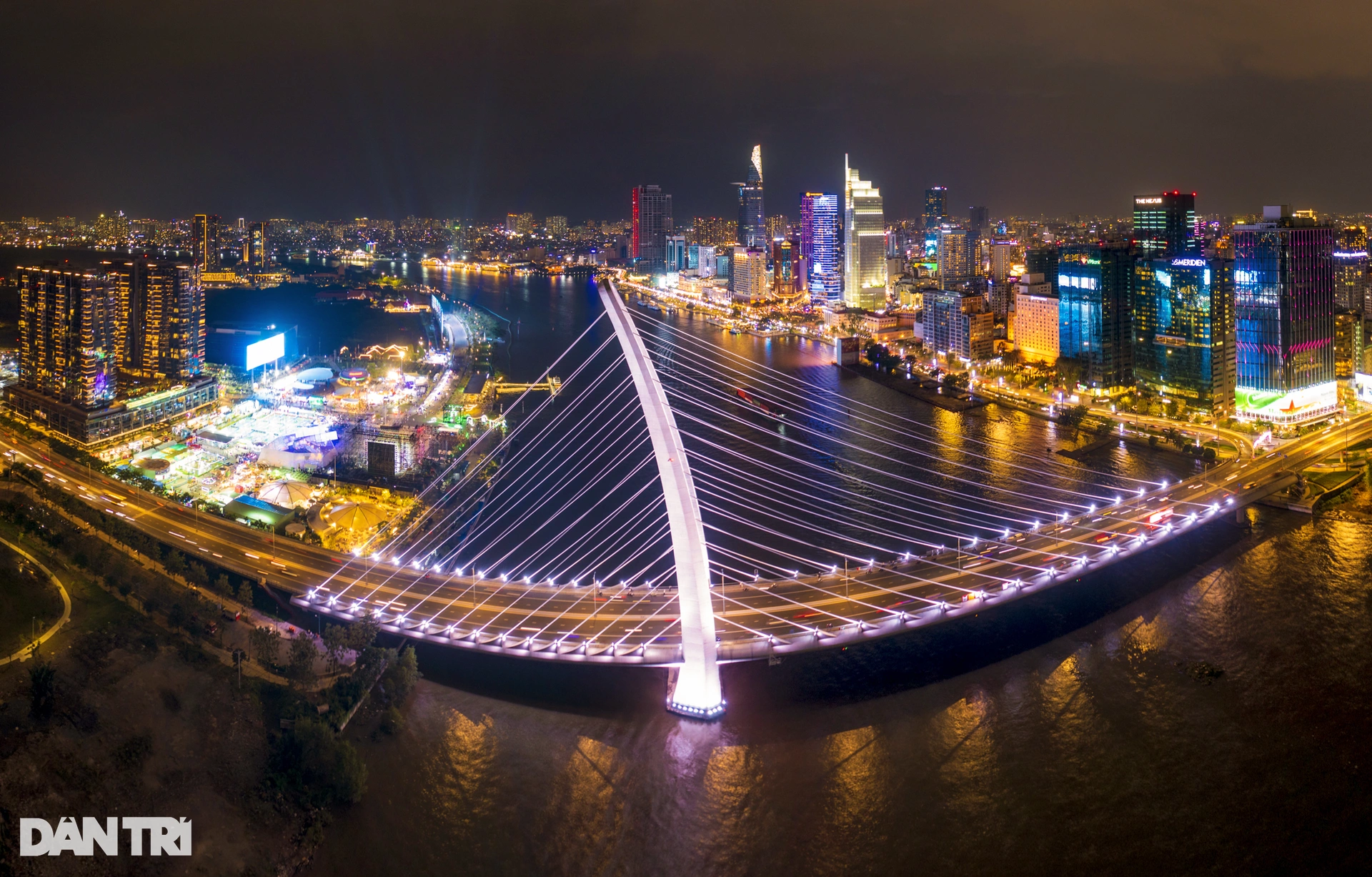





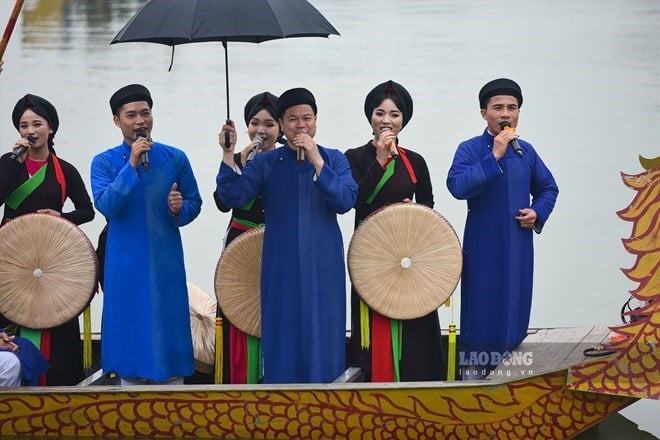

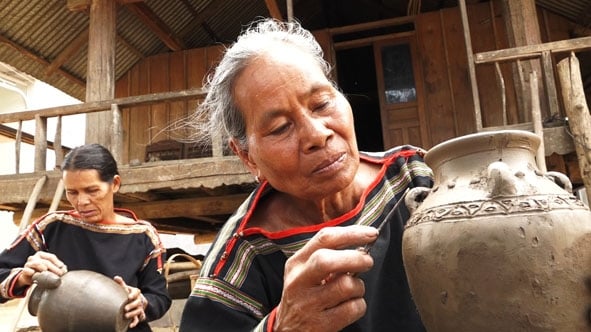

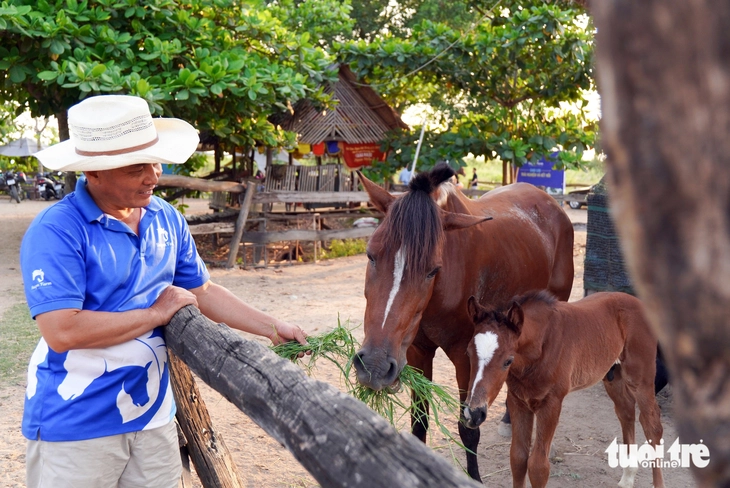
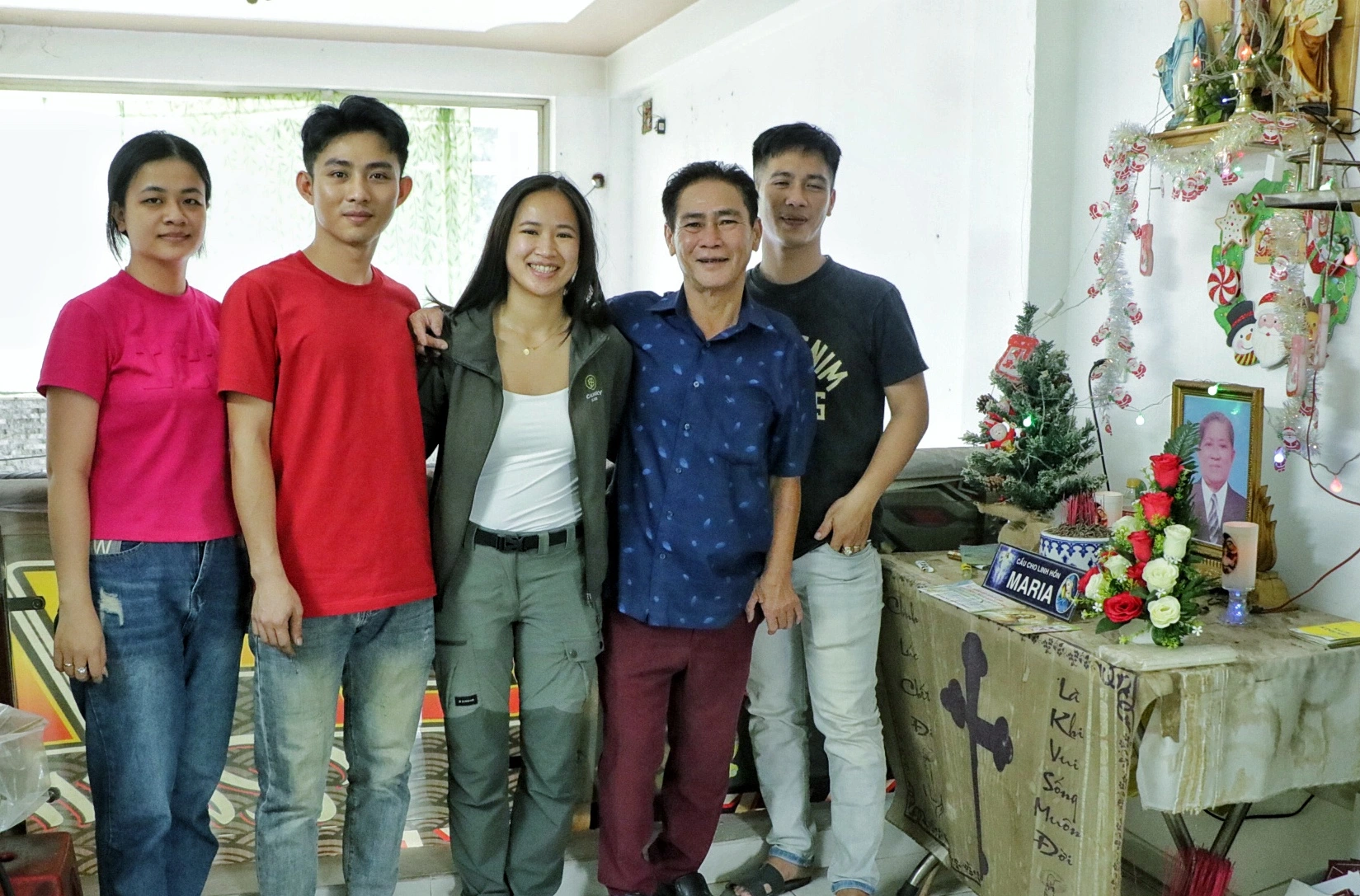

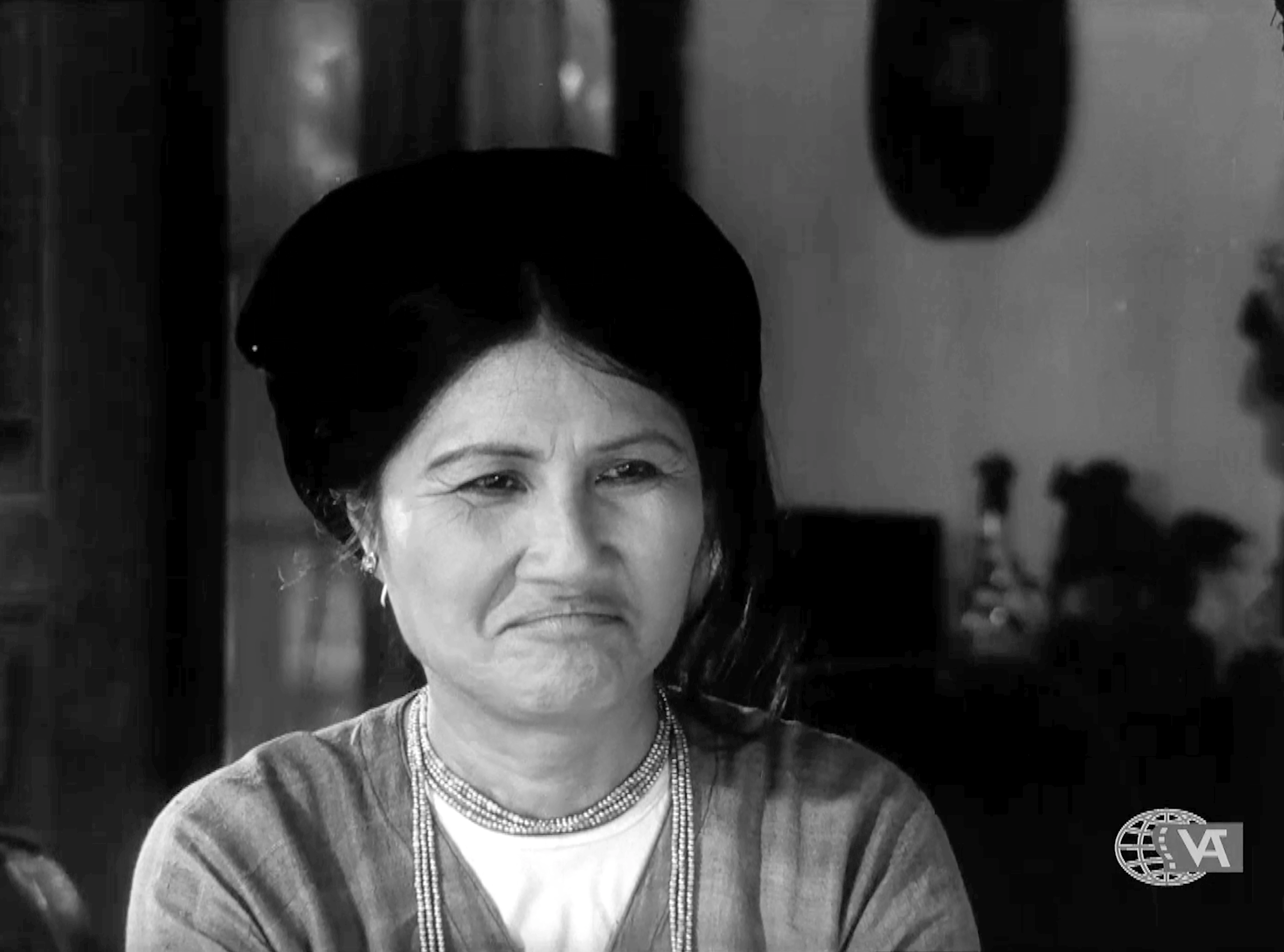












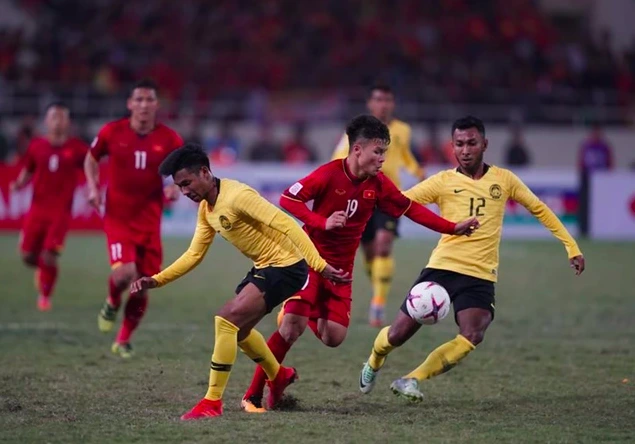









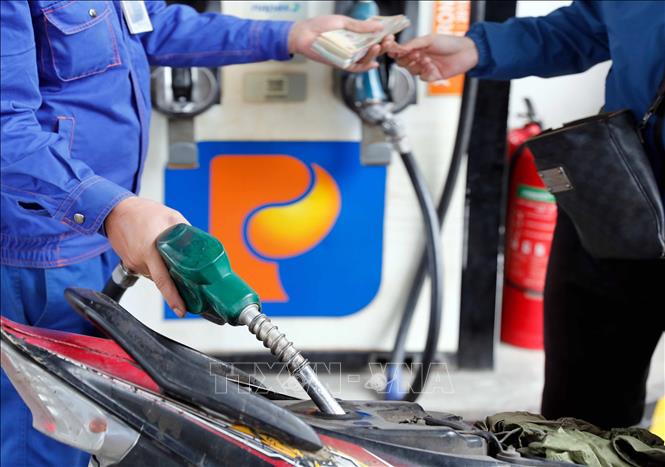










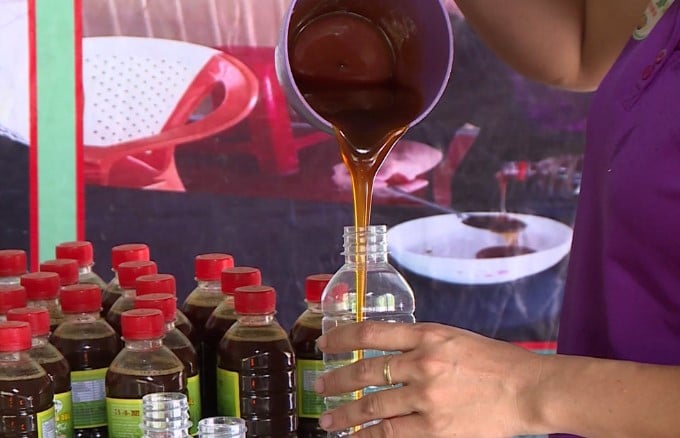
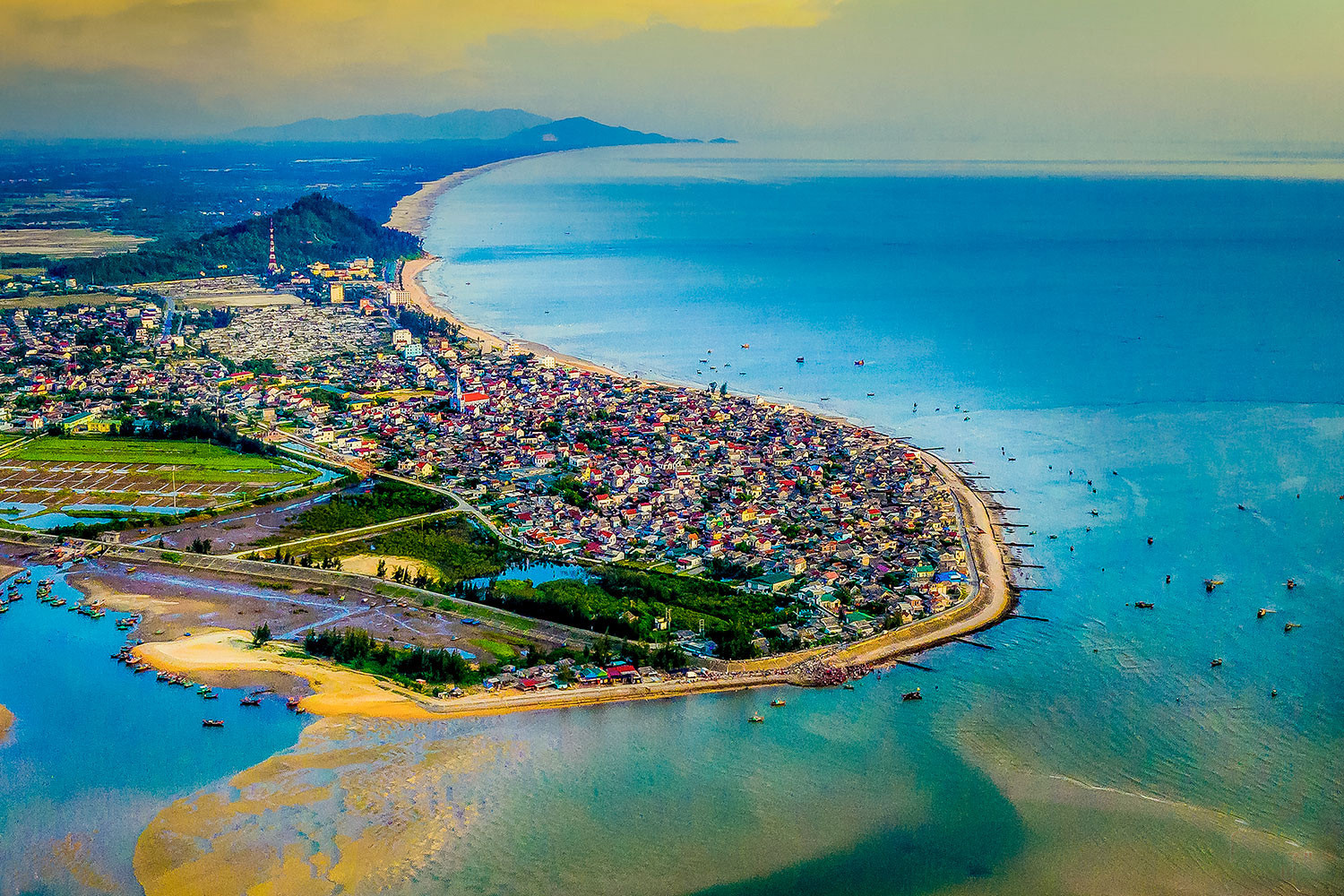
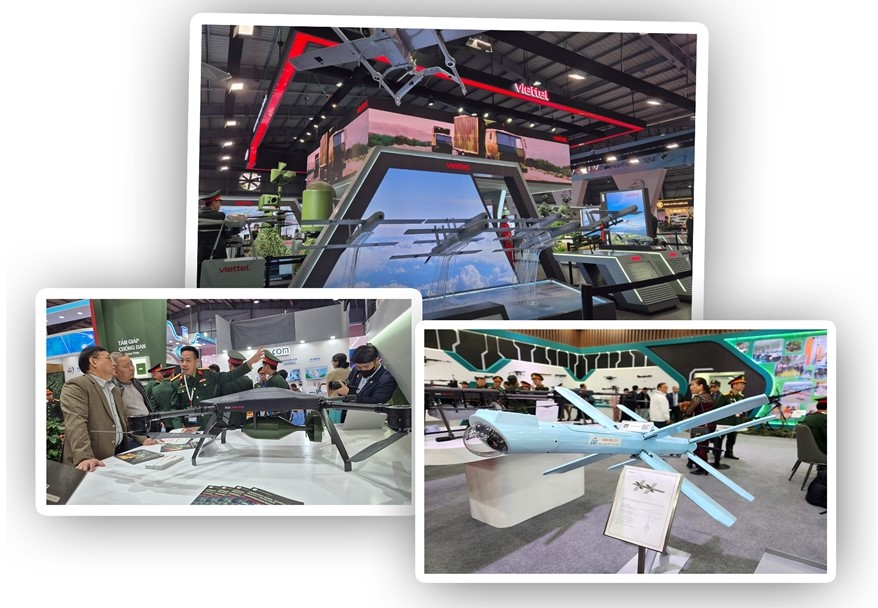


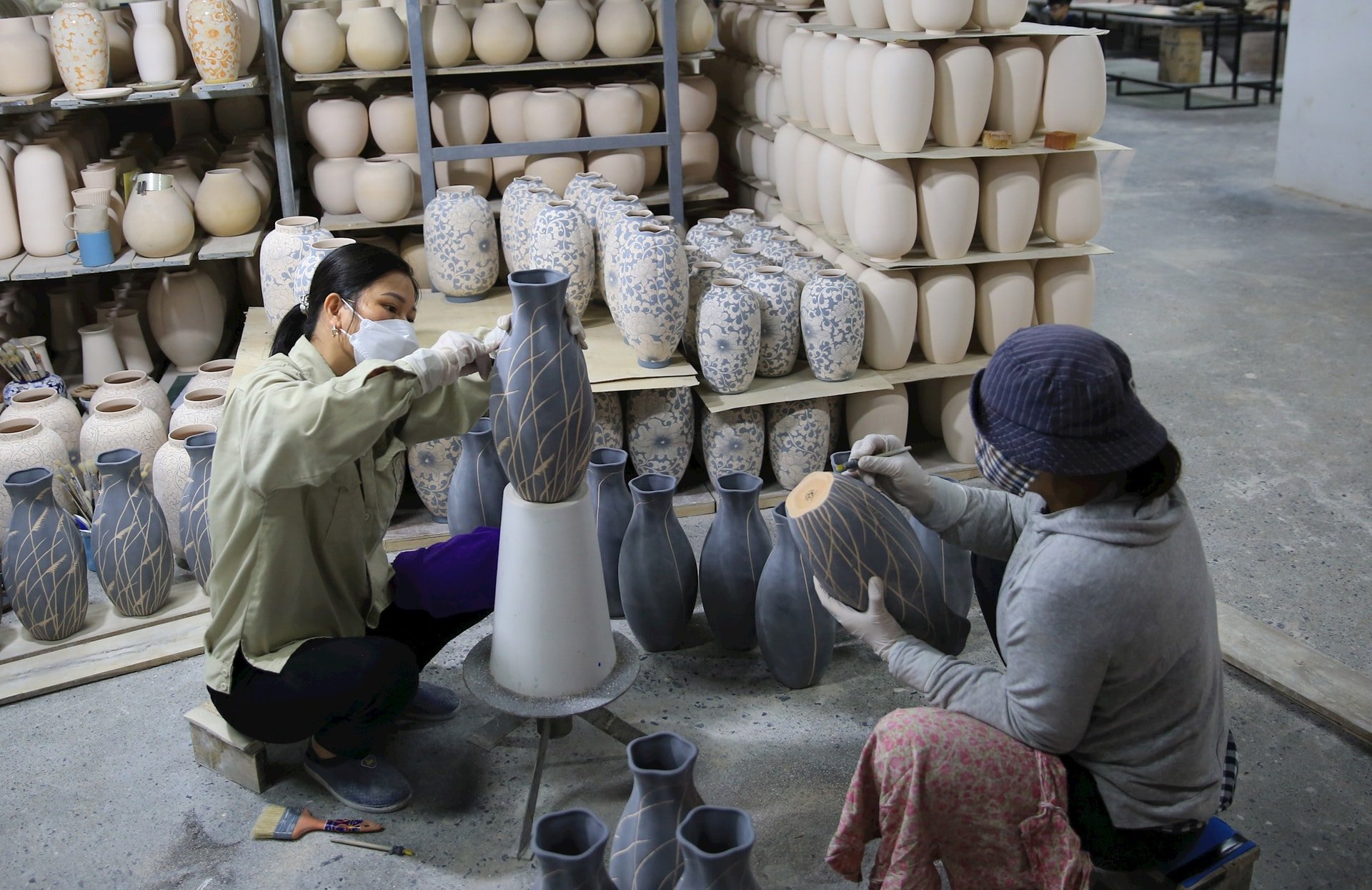

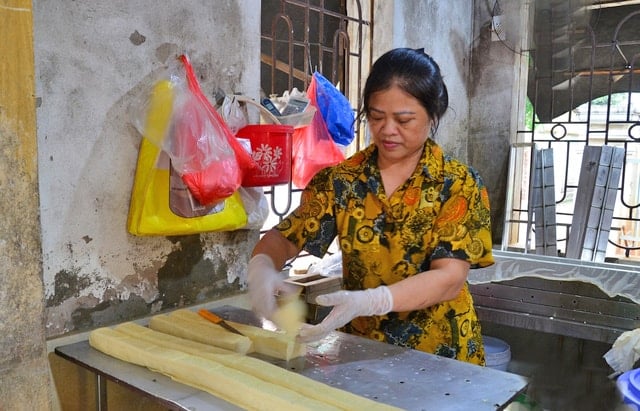
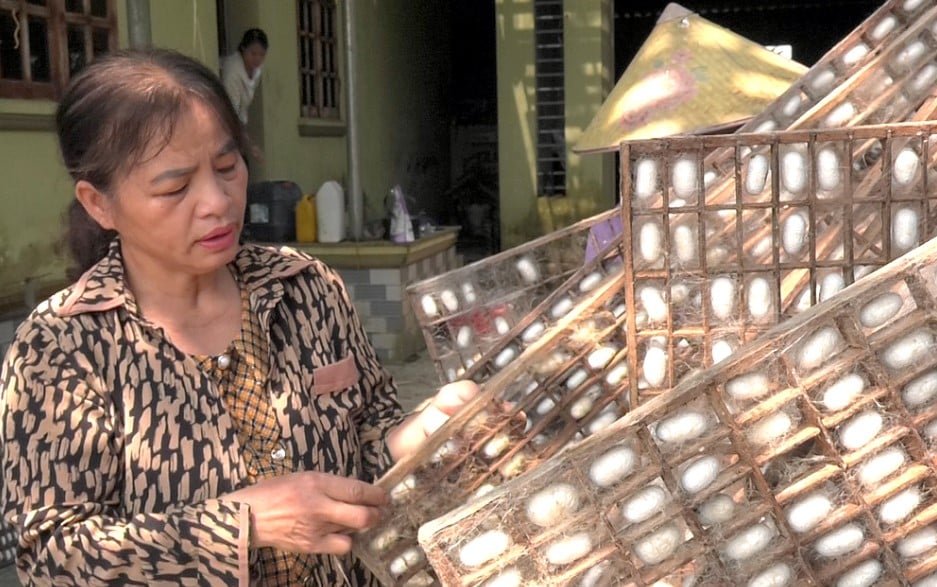
Comment (0)